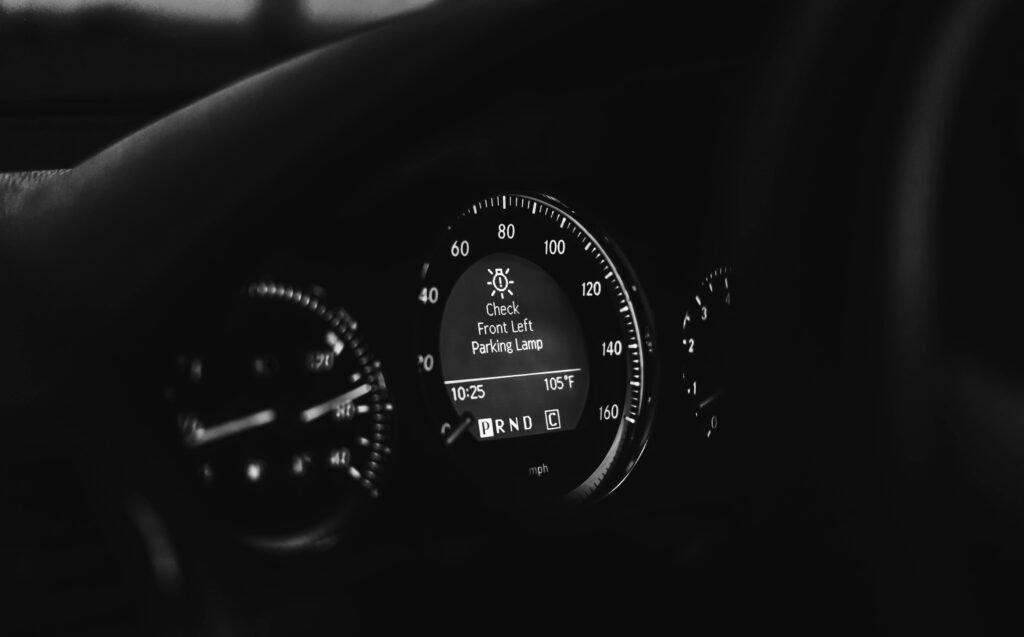
The illumination of the “Check Engine” light (CEL) on your dashboard is one of the most frustrating and anxiety-inducing moments for any driver in Lakeport, CA. It’s a cryptic signal that can indicate anything from a loose gas cap to a catalytic converter failure. In the era of modern vehicles, accurate diagnosis requires technical precision far beyond guesswork.
The editorial team at FindTrustedLocal.blog investigates the standards for engine diagnostics and performance optimization in Lake County. This report explains the complex system behind the light, details why accurate diagnostic service is essential for preventing major engine damage, and outlines the technical proficiency required to solve these specialized problems correctly.
1. Understanding the On-Board Diagnostics System (OBD-II)
The modern vehicle’s engine is managed by an advanced computer system, known as the Engine Control Unit (ECU). Since 1996, all vehicles have been equipped with the OBD-II (On-Board Diagnostics, second generation) system, which acts as the vehicle’s nervous system.
How the Check Engine Light Works
The CEL is triggered when the ECU detects a deviation from the vehicle’s established performance range. When a sensor (such as the oxygen sensor, mass airflow sensor, or misfire sensor) reports a reading outside the programmed limits, the ECU stores a Diagnostic Trouble Code (DTC) and illuminates the CEL. The light itself is not the problem; it is the symptom pointing toward a precise, complex issue.
2. The Dangers of Ignoring the Check Engine Light
Ignoring the CEL or attempting to clear the code without addressing the root cause can lead to severe, cascading engine damage.
Unaddressed Problems Lead to Costly Failures:
- Catalytic Converter Damage: If an underlying issue (like a continuous engine misfire) continues to feed unburnt fuel into the exhaust system, it can destroy the expensive catalytic converter.
- Fuel Efficiency Collapse: Even minor issues, like a failing oxygen sensor, can cause the ECU to incorrectly estimate the air-fuel mixture, drastically reducing miles per gallon.
- Component Failure: Small, unresolved issues in the cooling or ignition system can lead to serious internal damage, ultimately requiring thousands of dollars in engine repair.
3. The Gold Standard for Diagnostic Service
Accurate engine diagnostics require highly trained technicians and sophisticated, regularly updated scanning equipment. Simple code reading is never enough; the code only points to a system failure, not the root cause.
Essential Diagnostic Protocols:
- Code Retrieval and Analysis: The technician retrieves the DTC from the ECU using an advanced OBD-II scanner.
- Symptom Verification: The code is cross-referenced with the vehicle’s specific symptoms, service bulletins, and driving history.
- Pinpoint Testing: The technician must use specialized tools (e.g., multimeters, oscilloscopes) to test the suspected sensor, circuit, or component directly, confirming that it is the source of the malfunction.
- Repair and Verification: After the repair is completed, the technician clears the code and performs a test drive to ensure the vehicle’s ECU confirms the issue has been resolved.
This meticulous, multi-step process ensures that drivers in Lakeport only pay for the necessary repair, not costly trial-and-error replacements.
4. Performance Optimization and Preventive Maintenance
Beyond fixing failures, the same diagnostic expertise is used for engine performance optimization. Regular checks ensure the vehicle is running as cleanly and efficiently as possible, which is critical for emissions standards in California.
The Role of Diagnostics in Preventive Care:
- Fuel System Cleaning: Utilizing diagnostics to identify and clean clogged fuel injectors or throttle bodies, restoring power and fuel economy.
- Sensor Monitoring: Proactively monitoring oxygen sensors and mass airflow sensors for sluggish performance before they trigger a hard CEL failure.
- Fluid Quality: Combining diagnostics with routine fluid checks to ensure engine longevity.
This commitment to specialized technical service minimizes the risk of major breakdowns and extends the useful life of the vehicle.
5. Final Recommendation for Lakeport Drivers
For advanced engine diagnostics and technical auto repair in Lakeport, consumers need a provider with certified expertise. The highest standard is met by facilities that invest in both continuous technician training and modern diagnostic equipment. Our analysis shows that service providers who prioritize technical integrity and transparent communication build the strongest trust with their clients.
You can verify a company’s commitment to quality and professional accountability by checking their public record of client satisfaction: Google Business Profile Reviews.
For expert technical service and reliable solutions for that challenging Check Engine Light, contact a leading local provider: Check Service Availability Now.
EXECUTIVE ACTION SUMMARY
To ensure your vehicle’s ECU is correctly diagnosed and repaired in Lakeport, prioritize facilities with certified expertise in OBD-II systems and transparent diagnostic protocols.